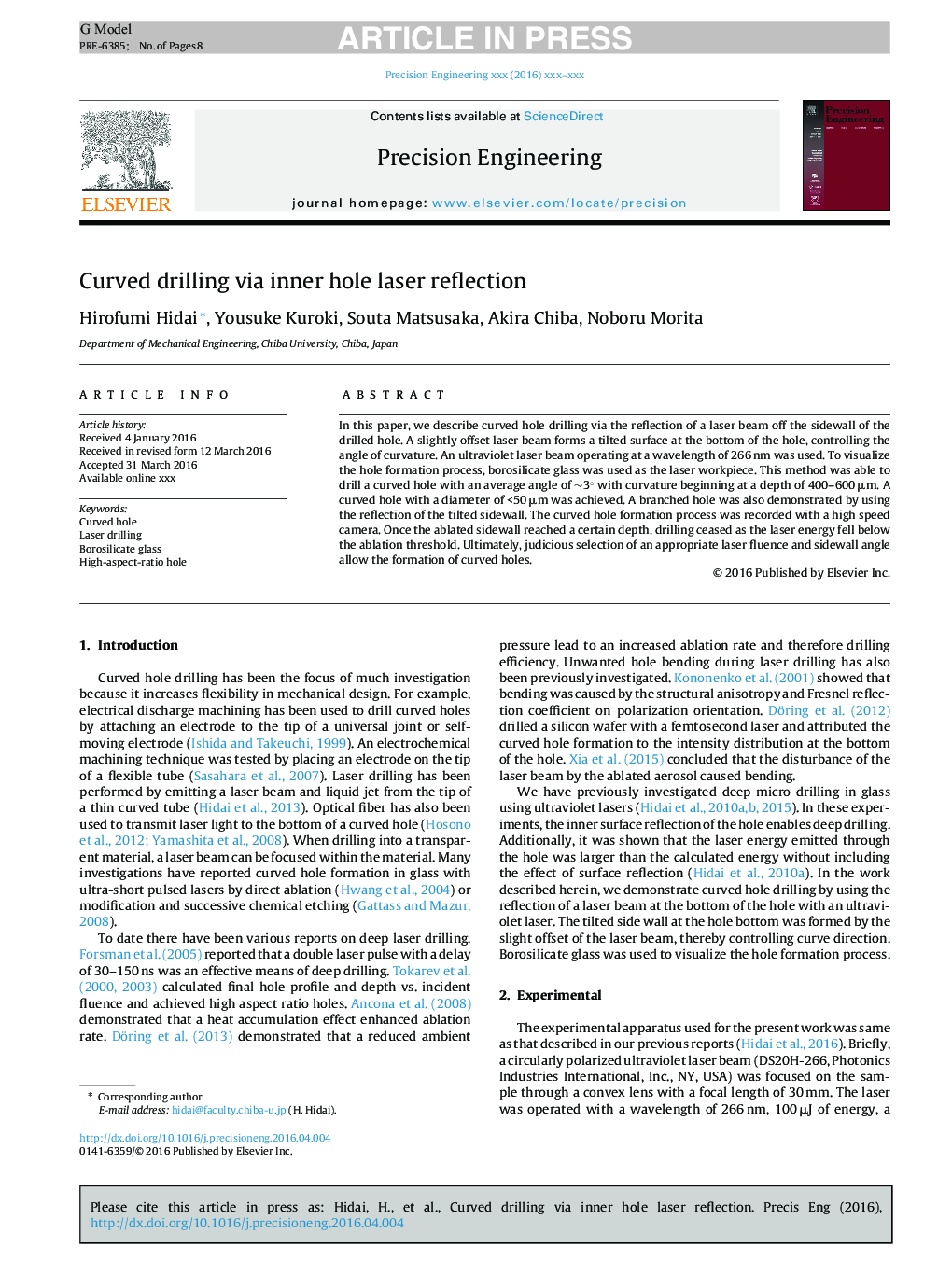| Article ID | Journal | Published Year | Pages | File Type |
|---|---|---|---|---|
| 7180617 | Precision Engineering | 2016 | 8 Pages |
Abstract
In this paper, we describe curved hole drilling via the reflection of a laser beam off the sidewall of the drilled hole. A slightly offset laser beam forms a tilted surface at the bottom of the hole, controlling the angle of curvature. An ultraviolet laser beam operating at a wavelength of 266 nm was used. To visualize the hole formation process, borosilicate glass was used as the laser workpiece. This method was able to drill a curved hole with an average angle of â¼3° with curvature beginning at a depth of 400-600 μm. A curved hole with a diameter of <50 μm was achieved. A branched hole was also demonstrated by using the reflection of the tilted sidewall. The curved hole formation process was recorded with a high speed camera. Once the ablated sidewall reached a certain depth, drilling ceased as the laser energy fell below the ablation threshold. Ultimately, judicious selection of an appropriate laser fluence and sidewall angle allow the formation of curved holes.
Keywords
Related Topics
Physical Sciences and Engineering
Engineering
Industrial and Manufacturing Engineering
Authors
Hirofumi Hidai, Yousuke Kuroki, Souta Matsusaka, Akira Chiba, Noboru Morita,
